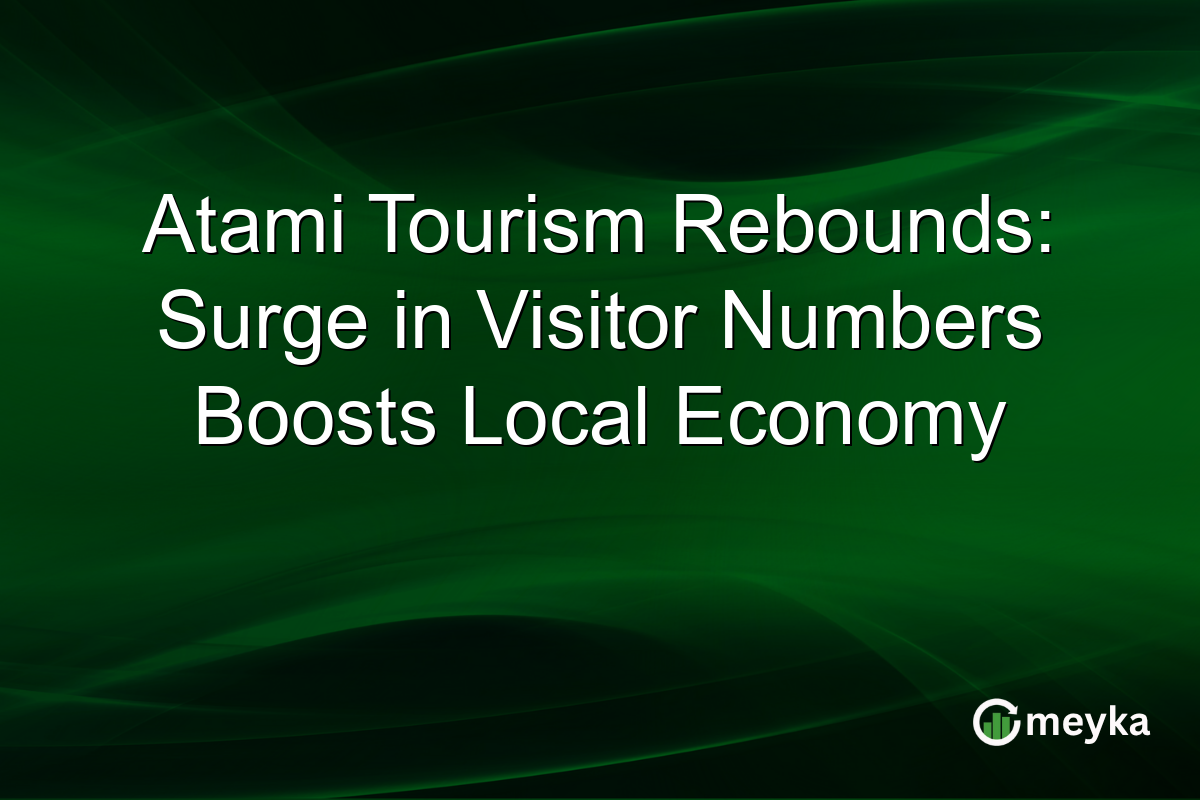Atami Tourism Rebounds: Surge in Visitor Numbers Boosts Local Economy
Atami, a scenic resort city in Japan, has become a focal point of economic revitalization. Recent data shows a significant rebound in domestic tourism, especially during the recent holiday period. This surge in visitor numbers is not only rejuvenating local businesses but also catching the eye of investors and policymakers who are keen on regional development. With renewed attention on Atami tourism recovery, the city is setting an optimistic precedent for other Japanese travel destinations.
The Surge in Visitor Numbers
Recent statistics reveal a remarkable uptick in Atami’s visitor numbers. The city saw a 30% increase in domestic tourists during the Golden Week holiday compared to last year. This growth trend underscores a broader recovery in Japan’s travel industry. Traditionally known for its hot springs and scenic views, Atami is experiencing a revitalization fueled by increased accessibility and travel incentives. This recovery is echoed in social sentiment. A recent tweet highlighted, “Atami is thriving again! Hotels are booked, and streets are bustling (#AtamiTourismRecovery).” Such positive sentiment is crucial in maintaining the momentum of Atami’s economic resurgence.
Economic Impact on Local Businesses
The influx of visitors translates directly into economic gains for Atami. Local businesses, including restaurants, hotels, and retail shops, reported a significant boost in sales. According to local business associations, sales during the peak travel periods increased by 25% compared to the previous year. This uptick is crucial for regions hit hard by previous tourism downturns. The boost in revenue is enabling these businesses to reinvest in improvements, employ more staff, and offer better services, which further fuels Atami economic impact.
Government and Investor Interest
The government’s proactive approach, coupled with investment incentives, plays a pivotal role in Atami’s recovery. Policy frameworks aimed at promoting regional tourism have been instrumental in attracting domestic visitors. Investment in infrastructure, such as improved transportation links, has made Atami more accessible, fostering ongoing growth. Investors are taking note. With signs of steady growth, Atami’s market is attracting interest from regional and even international investors seeking to capitalize on its resurgence. This forms part of a broader trend in Japanese travel industry growth, signaling potential for further regional revitalization.
Challenges and the Way Forward
While the rebound is promising, challenges remain. Sustainability and capacity management are critical as Atami continues to draw more visitors. Policymakers and businesses must adopt strategies that ensure environmental preservation and community well-being while accommodating the growing number of tourists. Looking forward, fostering a balance between growth and sustainability will define Atami tourism recovery success. Continued investment in infrastructure and marketing, alongside conservation efforts, will be key.
Final Thoughts
Atami’s recent tourism surge is driving a much-needed economic boost for the city, highlighting the potential for broader regional revitalization across Japan. As local businesses thrive and government policies support growth, Atami stands at the forefront of Japan’s travel recovery. The focus now shifts to maintaining this momentum in a sustainable and balanced manner, ensuring that economic benefits are long-term. This case points to the power of tourism as a tool for economic development and sets an encouraging precedent for similar regions aiming for recovery.
FAQs
Atami’s tourism rebound results from increased domestic travel, government incentives, improved infrastructure, and marketing strategies that attract visitors to its natural attractions.
The increase in visitors has revitalized local businesses, fueling growth in the hospitality and retail sectors, with sales increases up to 25% year-over-year during peak periods.
Government policies have been crucial, offering incentives for tourism, investing in infrastructure, and enhancing travel accessibility, which collectively drive the recovery.
Disclaimer:
This is for information only, not financial advice. Always do your research.






